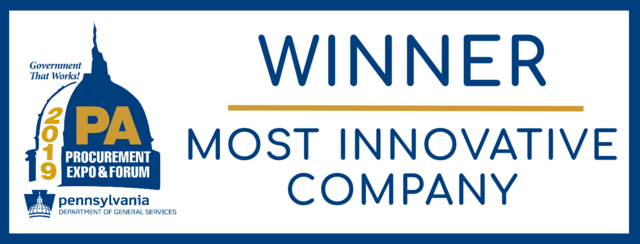
Sign up for Procurated
Procurated helps public sector buyers make more informed buying decisions through peer reviews. It is completely free to use.
Write and read reviews, find new suppliers, manage vendor performance and more!
Public Sector Workplace Optimization in the Pandemic Era of Work
The Covid-19 pandemic forced all knowledge workers to rethink the workplace. Transitioning to working at home virtually overnight, organizations and employees were required to quickly adapt to new ways of communicating and accessing information.
There were/are definitely positives to come out of this pressure test. For one, 61% of government officials surveyed recently believe the pandemic expedited digital transformation at their organization (Granicus).
As private and public organizations start thinking about bringing workers back to the office, there is no shortage of conversation around the topic of workplace optimization. Where is the best place for work to happen? How do we best collaborate? Innovate?
Shuli Steele, globally recognized campus planning and workplace optimization expert, joins us to share her approach to workplace optimization. In the process, Shuli shares actionable tips for public sector organizations to successfully navigate the tricky ‘Back to Work’ dilemma.
Click here to listen to our full interview with Shuli.
Shifting from Time, Title, and Tenure in Workplace Prioritization
When one thinks about the traditional workplace hierarchy – and its implication on desk layout, hours, and privacy, among other considerations – time, title and tenure are the centerpieces. Employees are expected to be at their desks by a certain time and to be in the office no less than 40 hours a week. Senior executives are awarded corner offices with the best natural light. Private offices and the most desirable cubicles are then assigned by some equation of team, seniority and length of time at the company. And there, you sit.
When it comes to optimizing the workplace, says Shuli, organizations need to shift away from this legacy model.
“Rather than looking at title and tenure as guideposts, organizations need to focus on task,” she affirms. “What is a person accomplishing? What sort of tasks do they need to accomplish, and how do they roll up to our greater organizational objectives?”
The good news: many organizations already have the building blocks to make this happen. First, identify the key performance metrics for your organization’s annual or quarterly objectives. Then, take those desired results and break them into the tasks that will drive success.
“Those tasks start to inform an optimized workplace,” Shuli says. “You’ll have a clearer idea of the seating, surfaces, technologies, systems, storage, and spaces different members of your team will need to be successful.”
Applying Task Thinking to the Pandemic-Era Workplace
As organization leaders consider what work will look like in the coming months and years, the biggest question is, “where should work happen?”
As that planning happens, Shuli begs one thing of leaders: Stop asking people how many days a week they want to come in.
“To tell someone, ‘pick two days to come in’ completely defeats the purpose if the people they collaborate with select different days,” she says. “Or worse: when asked how many days they want to come in, someone commits to an amount under the impression that the full team will be there along with full access to resources, when that isn’t the case.”
This mindset, Shuli argues, is a return to the notion that time in the office is indicative of productivity and engagement. Or, that seniority or tenure is a threshold for receiving flexible work privileges. Organizations instead should continue to take a task-first approach.
“Rather than asking how many days someone wants to come in, why not ask ‘What do you need to accomplish?’, ‘With whom?’, and ‘What technology or resources do you need?’,” Shuli says.
Just as a task-first approach informed your workplace optimization pre-pandemic, asking these questions will inform the spaces, surfaces, technologies, systems, and storage your office requires to best meet your team’s needs moving forward. Added bonus: this approach will also make your team feel empowered and trusted, two things that positively correlate with employee engagement and retention.
Rapid-Fire Workplace Optimization Tips from Shuli
In addition to these high-level concepts, Shuli dropped a ton of workplace optimization hacks throughout our conversation:
- Managing noise is critical to balancing spaces that cater to different tasks and working styles. Well-placed carpet is a cost-effective solution that can work wonders.
- Surveying employees about how they want to work, listening to their answers, and asking follow-up questions is essential.
- Branding workspaces is completely free and can promote a sense of employee belonging. Instead of having a ‘quiet room,’ try naming it after a favorite superhero or assigning it a color. An identity gives team members something to connect over.
- Testing out new space concepts is now possible during this transition period. With many folks still working from home, you can create workplace “protypes” by rearranging furniture in unused office space. Keep track of how these spaces are used (or not) as employees begin to return. Use these experiments to inform more permanent space investments.
Final Takeaway: No Two Workplaces are the Same
The mark of a great workplace isn’t fancy coffee or a ping pong table. It exists when an organization is in tune with their workforce’s needs and creates a space that helps them be successful. An open mind and communication will help you get the information you need to make informed workplace decisions.
Published on Oct 28, 2021

